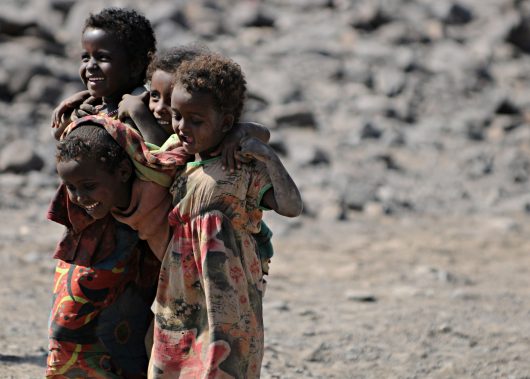7 Years of USAID in Djibouti
 From 2011 to 2018, the U.S. Agency for International Development (USAID) has been working with Djibouti, a country located in sub-Saharan Africa. It operates numerous programs lasting from one to multiple years, and an increase in funding for specific programs has shown how USAID in Djibouti can work.
From 2011 to 2018, the U.S. Agency for International Development (USAID) has been working with Djibouti, a country located in sub-Saharan Africa. It operates numerous programs lasting from one to multiple years, and an increase in funding for specific programs has shown how USAID in Djibouti can work.
2011
In 2011, Project Aide, which came out as a four-year plan in 2010 to help increase basic education, was still funded at $1.8 million. Project Aide helped train teachers and revise textbooks. The Commodity Cost of USAID Title II Food Aid received four million dollars to stop hunger, fight disease, support families and help with health, water, nutrition and hygiene. Furthermore, in 2011 USAID in Djibouti also worked with the Combined Joint Task Force/Horn of Africa to construct three new classrooms, upgrade solar panels, renovate latrines and build a security fence.
2012
In 2012, Project AIDE received its all-time highest funding of $2.9 million. The Commodity Cost of USAID Title II Food Aid program was still funded, but only at one million dollars. However, 2012 brought a new program from USAID called Roads to a Healthy Future II (Roads II). This program received $1.3 million and the purpose was to alleviate HIV/AIDS and other STIs in Djibouti. USAID in Djibouti worked the Roads II program from 2012-2017. Djibouti also first received U.S. President’s Emergency Plan for AIDS Relieve (PEPFAR) funds in 2012, which would help prevent HIV/AIDS starting in early 2013.
2013
2013 brought no new highly funded programs but continued with two USAID programs: Project AIDE and Commodity Cost of USAID II Emergency Program for Humanitarian Assistance. Project AIDE received $2.4 million, and the Commodity Cost program received $1.7 million. USAID in Djibouti, as well as Roads II, helped bring SafeTStop in 2013. The goal of SafeTStop was to help educate individuals about HIV/AIDS and provide condoms and testing.
2014
USAID in Djibouti brought a new program in 2014 funded at $1.5 million. This program was Commodity Cost of USAID Title II Emergency Program for Protection, Assistance and Solutions. It was helped further by the World Food Program to supply protection, assistance and solutions to countries in further need of aid. The World Food Program also helped implement another program called ITSH Freight Cost of USAID Title II Emergency Program for Protection, Assistance and Solutions, which reappears with high funding in 2017. Roads II continued steady funding with $1.3 million.
2015
Both regular aid programs dropped in funding in 2015 to $1.2 million. The two programs are The Commodity Cost of USAID Title II Emergency Program for Protection, Assistance and Solutions and Roads II, but both remained the two highest funded programs of the year.
2016
2016 brought an end to the Roads II program but marked the beginning of two new, highly funded programs. The water, sanitation and hygiene (WASH) sector received the most funding with $1.7 million, and the goal was to increase access to potable water, sanitation and hygiene. WASH also planned to help at least 25,000 poor or vulnerable people enhance their hygiene practices so they can live healthier lives. The other new program was the Workforce Development program (WFD), which aimed to help youth and adults obtain knowledge higher than basic literacy and numeracy to increase job opportunities. 2016 also brought along the Women’s Empowerment and Livelihoods project at Arta’s Regional Council, which is a two-year, one million dollar program to help women in Djibouti.
2017
By 2017, the WFD project was in full effect and funded at $12 million. Now, the project is planned to last roughly five years, taking it all the way to 2021. USAID in Djibouti also funded more than one million dollars each to the ITSH Freight Cost of USAID Title II Emergency Program for Protection, Assistance and Solutions and Commodity Cost of USAID Title II Emergency Program for Protection, Assistance and Solutions.
2018
As of today, there are plans to help with US Food AID for refugees and to continue help with education, such as training another 1,200 primary school teachers and revising textbooks with a gender lens. USAID in Djibouti also plans to support programs to help control diseases such as polio, tuberculous and HIV/AIDS, and also improve nutrition. This year also brings the first public-private partnership to help with HIV/AIDS and building a 1,600 square foot center for health care, counseling, testing and education.
As the past ten years progressed, USAID in Djibouti changed with the needs of the country. Every year, USAID focused on what the country needed to be as successful as possible. With the constant aid and funding, Djibouti was able to increase its overall health and workforce and decrease its diseases rates.
– Amber Duffus
Photo: U.S. Africa Command
